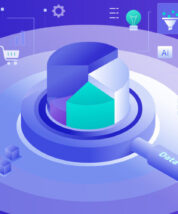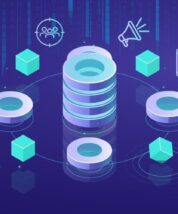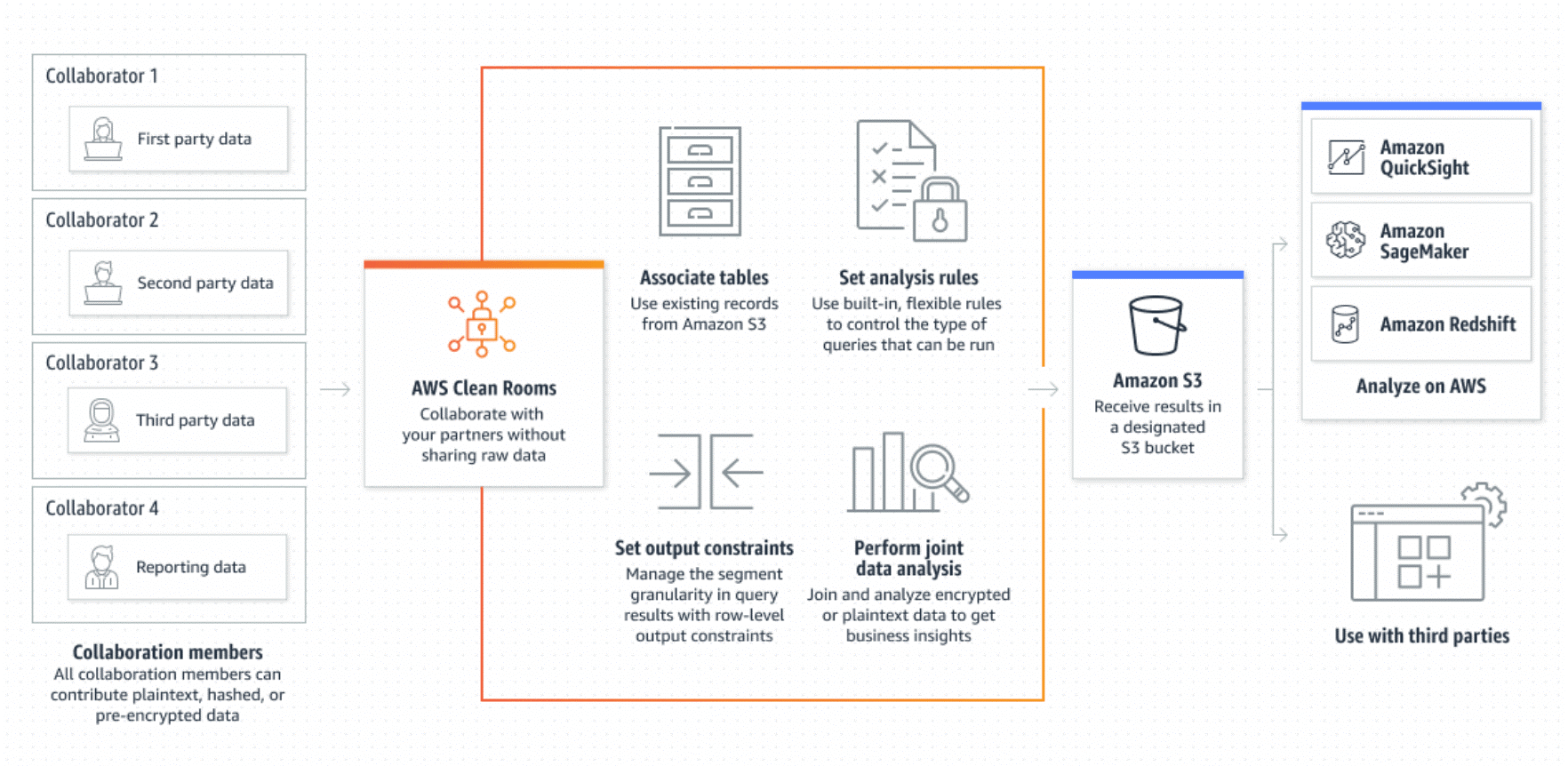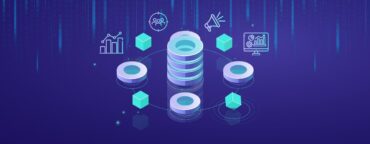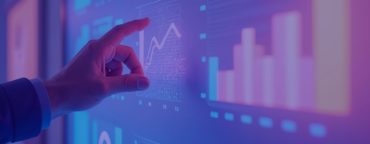Overview
Faced with this new context, companies must rethink their working methods and find solutions that allow them to continue collaborating, cleaning data, and harnessing the power of data, while ensuring a high level of confidentiality. It is precisely in this context that data clean room tools have emerged, facilitating secure data analysis. These secure environments provide a way to analyse and compare data between different parties without ever exposing personally identifiable information.
In the following, we will explain in more detail what a data clean room is, why companies are increasingly interested in it, how it works in practice, and what tools are already available on the market.
What is the definition of a data clean room?
What is a data clean room?
A data clean room (or ‘secure data room’) is a protected space that allows multiple companies to compare and analyse their data together without ever directly revealing individuals' personal information.
It is like a closed, monitored room where you can work on data, but without ever being able to leave with sensitive information. This preserves people's privacy while still allowing useful results to be obtained.
Comparison with the old way of sharing data
- Before: Companies exchanged files (often in CSV or Excel format), sometimes containing raw data. This carried a high risk of leaks, misuse or loss of control.
- Today: Data is encrypted (protected by a code), anonymised (without direct personal information) and can only be viewed through predefined and authorised analyses. This means that individual data can no longer be accessed, only overall results.
Areas where it is used
- Advertising & marketing: measuring the actual effectiveness of advertising campaigns, finding out whether they have reached their target audience.
- Healthcare: enabling hospitals and researchers to work together on medical data to advance research, while protecting patients.
- Finance: detecting fraud or verifying regulatory compliance without sharing sensitive customer data.
In summary
A data clean room is a bit like a clean room for data:
- You can enter it to work and get answers,
- But you can never take away or expose personal data.
It is a modern and secure way to collaborate using data without compromising individuals' privacy.
How does a Data Clean Room work?
Step-by-step process
1. Data pooling
Each company contributes its data to a secure space (as if each were placing its puzzle pieces in a closed box).
2. Protection and anonymity
All personal information is removed or transformed so that individuals can no longer be directly identified.
3. Secure linking
The data from the different companies is linked using security techniques, but without ever revealing identities.
4. Controlled analyses
You cannot ask any questions you want: only certain analyses that have been validated in advance are possible, to prevent abuse.
5. Overall results
In the end, we do not obtain raw data, but only statistics or general trends (for example: ‘40% of customers responded to the campaign’), never individual information.
The technology behind it
Clean room technology is based on:
- advanced encryption
- certified cloud environments
- artificial intelligence to improve analysis.
In short, to answer the question “how does a data clean room work?”, it is important to remember that these solutions combine security, anonymisation and strict access control.
Use cases for data clean rooms
Use cases for data clean rooms are multiplying in marketing, healthcare and finance.
1. Marketing & advertising
- Multi-channel attribution (television, digital, retail).
- Studying advertising performance in the absence of cookies.
- Comparison between advertisers and publishers.
2. Customer insights
- Accurate segmentation without breaching confidentiality.
- Identification of audiences sensitive to promotions.
3. Inter-company collaboration
- Exchange of market trends between partners.
4. Product innovation
- Development of new services through aggregated analysis.
Subscribe to our newsletter and gain access to strategic insights, exclusive analyses, and expert tips to enhance your online presence.
Examples of Data Clean Rooms
Large technology companies have already created their own secure data room solutions. Each player offers a service tailored to its own universe:
- Google (Ads Data Hub): allows advertisers to measure and analyse the effectiveness of their adverts on YouTube and Google Ads.
- Meta (Advanced Analytics): helps to understand the performance of campaigns on Facebook and Instagram.
- Amazon (Marketing Cloud): provides the ability to study the impact of advertising campaigns carried out within the Amazon ecosystem (website, applications, etc.).
- AppsFlyer: offers a secure data room specially designed for mobile marketing.
- Snowflake: a more generalist provider, used by many sectors (banking, healthcare, distribution, etc.) to cross-reference and analyse their data securely.

Example of Data Clean Room
Advantages and limitations of data clean rooms
Advantages
- Privacy protection: data clean rooms enable compliance with regulations such as the GDPR and CCPA. They ensure that users' personal data is never directly exposed, reducing the risk of privacy breaches.
- Enhanced security: thanks to encryption and anonymisation, shared information is protected against leaks or misuse. This allows companies to collaborate without fear of their sensitive data falling into the wrong hands.
- Easier cooperation: these secure environments promote partnerships between companies, advertisers, platforms and researchers. Everyone can share their data safely, paving the way for richer and more accurate analyses.
- Strengthened trust: by using privacy-friendly solutions, brands show their customers that they protect their data. This improves the company's image and helps build a lasting relationship with consumers.
Challenges and limitations
- High cost: Setting up, maintaining and developing a clean data room requires considerable financial investment, which is often beyond the reach of small businesses.
- Significant technical complexity: These solutions require advanced skills in data management, cryptography and secure analytics. This means recruiting specialists or using specialist providers.
- Limited access to data: clean data rooms do not allow raw data to be viewed. They only offer aggregated results or overall statistics, which can sometimes limit the depth of analysis that can be performed.
The future of data clean rooms
With the gradual disappearance of third-party cookies (those little files that tracked internet users from site to site), data clean rooms will play a central role in digital marketing. They allow companies to continue to understand their audiences and measure the effectiveness of their campaigns, while better respecting privacy.
Future trends
- Cookie-free marketing
Advertisers will increasingly rely on clean rooms to obtain reliable information. Instead of intrusively tracking internet users, they will be able to analyse behaviour collectively and anonymously. This will become the new norm for managing advertising campaigns.
- Artificial intelligence and machine learning
These technologies will enable much more advanced analysis: automatic behaviour predictions, more detailed audience segmentation, personalised recommendations, etc. All this without ever needing to expose personal data.
- Better accessibility and common standards
Today, each major player (Google, Meta, Amazon, etc.) offers its own solution, which can sometimes be difficult to use together. In the future, we should see the emergence of shared standards that will make clean rooms simpler, more interoperable and more accessible, even for medium-sized companies.
To sum up, data clean rooms will become the equivalent of the ‘new rules of the game’ in digital marketing: they offer a way to continue to exploit data, but in a responsible, secure and forward-looking manner.
Subscribe to our newsletter and gain access to strategic insights, exclusive analyses, and expert tips to enhance your online presence.
Conclusion
The information shows that data clean rooms are very useful for analysing and sharing data while protecting confidentiality.
They answer a key question: "What is a data clean room and why do companies use them? "
The reason is simple: it is currently the only way to combine innovation, marketing performance and compliance with data protection rules.
Practical advice: Companies would be wise to start testing these solutions offered by various providers (Google, Meta, Amazon, AppsFlyer, Snowflake) right away, by launching a pilot project and gradually integrating this approach into their data management strategy.


